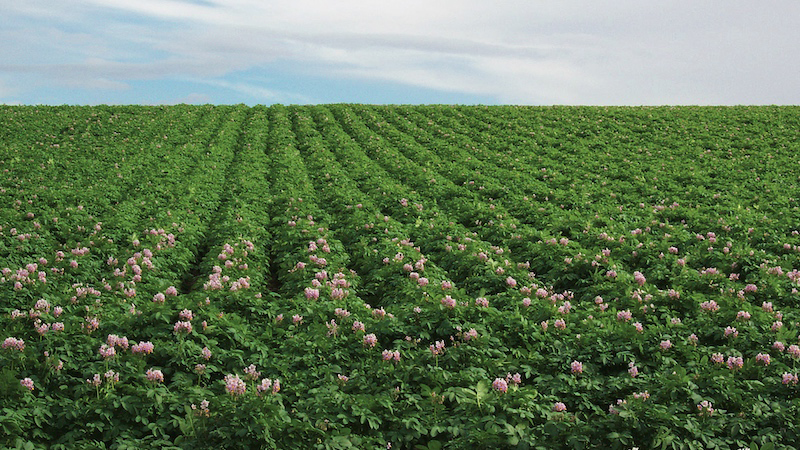A Combination Of Culprits Are Related To The Decline In Bee Populations

(Photo credit: Randy Oliver)
To combat declining bee populations, researchers like vanEnglesdorp are thinking more broadly — combinations of solutions rather than a single answer.
“We know the protein in varroa mites hurts bees’ immune systems,” vanEnglesdorp says. “We also know there is a nutrition problem where bees don’t have enough pollinator-friendly plants.”
These issues, vanEnglesdorp says, exacerbate the problem some researchers point to most: the need for a better understanding of how pesticides are being used and how they may be interacting with bee populations.
Know The Role Of Pesticides
“It’s becoming clearer that some problems are the direct result of pesticides,” vanEnglesdorp says. “And this includes exposure to things we haven’t previously thought of as toxic, like fungicides. We need to re-think unnecessarily exposing bees to fungicides.”
Some research, vanEnglesdorp says, shows fungicides may not inherently be toxic to bees, but they may predispose bees to contracting infections. Others may have intrinsically lethal effects.
Understanding the effects of insecticides on bee populations is an issue Maryann Frazier, Penn State University pollinator researcher, is taking on in her studies. Particularly, Frazier is interested in examining what she calls the “sub-lethal” effects of pesticides — those effects not outwardly observable, such as the way pesticides affect bees’ immune systems.
Currently, Frazier is testing how colonies react to the inert ingredients in pesticides that are not supposed to be biologically active. She and her colleagues expose one colony to the formulated pesticide ingredients, another to just the inert ingredients alone, and compare them to a control colony.
While the study is still in its beginning stages, Frazier says, in the lab, it is clear some inert ingredients are biologically active and can harm bees, particularly in their larval stage. Now, she and her team are working on testing those findings in the field with beekeepers and growers.
The decision to study the effects of inert pesticide ingredients was born out of the conclusion that Frazier and her colleagues could not find any one pesticide that seemed to be directly connected to bee decline or Colony Collapse Disorder.
That finding prompted the researchers to ask whether there is something else within pesticide formulas that is causing the damage.
“If you look at a pesticide label, oftentimes the active ingredient is a small amount of the total ingredients and the inert ingredients are oftentimes very much higher — sometimes 90% can be inert — so there can be a lot more inert ingredients that are going out into the environment than active ones,” Frazier says. “We need to know if there’s one common ingredient causing the impact or if it’s a combination of inert and active ingredients.”
Collaboration And Communication
Controlling bee population decline is particularly important to the almond industry. Bob Curtis, associate director of agricultural affairs at the Almond Board of California, says this is the board’s highest priority.
Aside from funding pollinator research that tackles varroa mite management and bee nutrition, Curtis says the Almond Board is concerned with building a framework of pest control advisers for beekeepers to better divide the workload.
Since 2010, the Almond Board of California, other organizations, and beekeepers have funded Tech Transfer Teams to address this issue.
Each team is composed of technical experts who interact with groups like commercial queen breeders and other beekeepers to monitor disease and parasites. The teams then provide analyses to beekeepers who can use the information to “make science-based decisions on hive and bee pest and disease status,” Curtis explains.
Better communication between growers and beekeepers, too, will help combat the issues facing bee populations, he says.
“You can’t point to one thing that has caused the decline of bees,” Curtis says. “But we have always needed a better system in place that monitors bees. Increased communication between growers and beekeepers is essential to reducing the loss rate. Each side needs to know what’s going on.”
That loss rate, however, is improving, Curtis says. Each year, the Bee Informed Partnership, a collaboration of bee researchers from around the country supported by USDA and the National Institute of Food and Agriculture to investigate bee health, conducts a nationwide survey to report winter colony losses.
For the winter of 2013-2014, the national average loss was about 23%, nearly a seven percentage point improvement from the eight-year average total loss of 29.6%.
“We are hoping it’s a signal things are improving now that we’re at 23%,” Curtis says. “But we are hoping to get to a more traditional loss rate of 15%.”
3 Pointers On Promoting Bee Health
The University of Maryland’s Dennis vanEnglesdorp shares his top three ways you can help address bee population decline:
1. Beekeepers and growers need to work together more frequently. “Growers and beekeepers have unique sets of knowledge that, when put together, can create solutions pertinent to their particular operation.”
2. Pay close attention to how you’re applying pesticides. “We’re at the point now where we know high uses of insecticides and fungicides are killing bees. We have to reduce our dependence on them.”
3. Convert 10% of your landscape into a pollinator-friendly climate. “Bee nutrition is a huge factor in protecting bee health. They need marginal land to provide nutrition all year long.”









